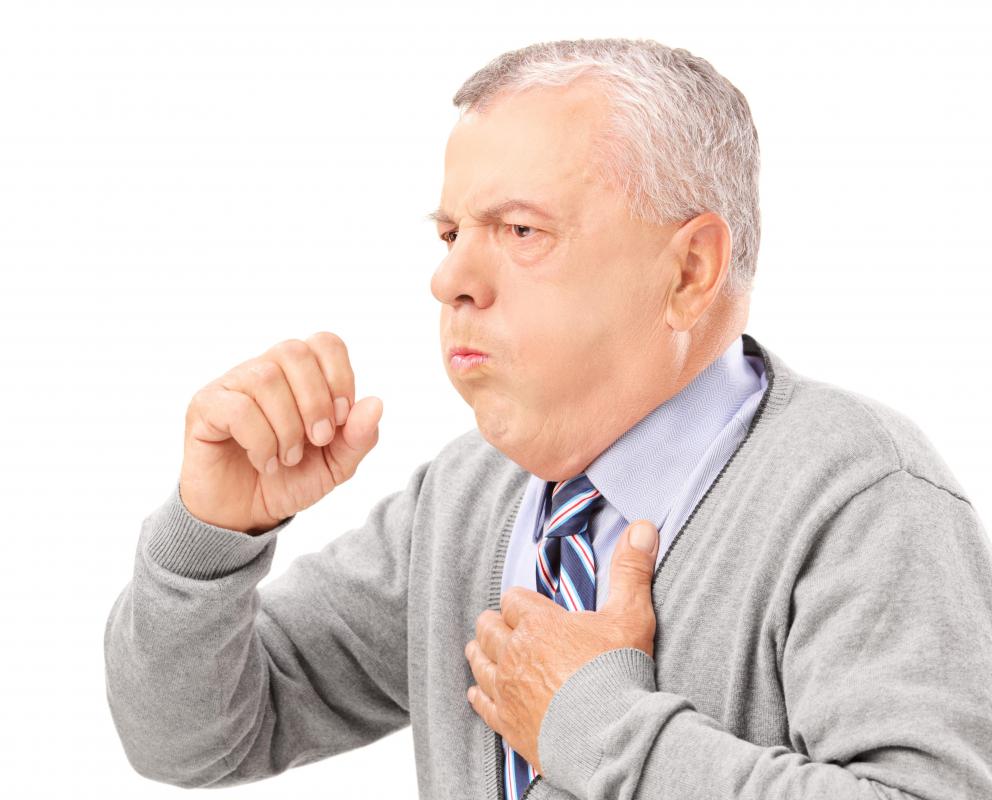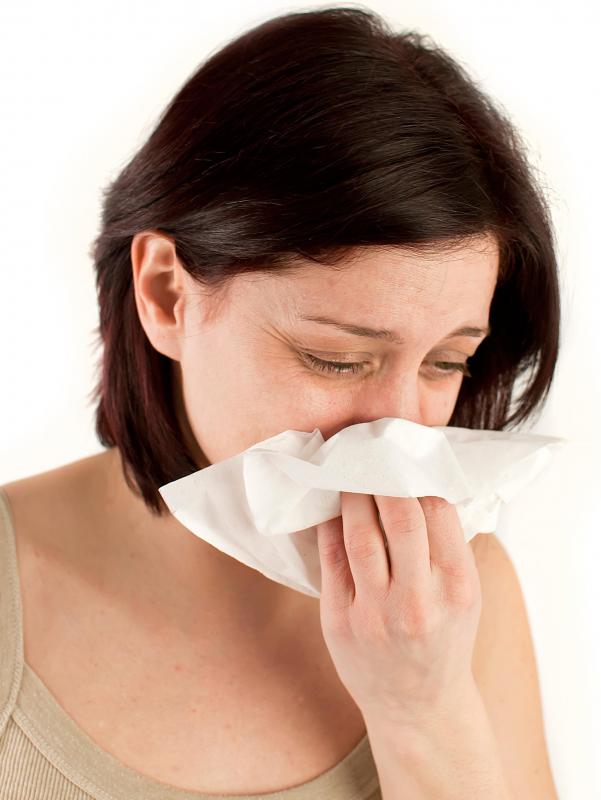At TheHealthBoard, we're committed to delivering accurate, trustworthy information. Our expert-authored content is rigorously fact-checked and sourced from credible authorities. Discover how we uphold the highest standards in providing you with reliable knowledge.
What is Whooping Cough?
Whooping cough is a bacterial infection of the respiratory system which is characterized by heavy wheezing and racking fits of coughing. It typically attacks children, since adults appear to develop natural immunities to it through minor exposure. Whooping cough is also fully preventable through vaccination, and vaccines are strongly recommended to all parents of young children, as the disease can be fatal.
Some people know whooping cough by “pertussis,” the name which medical professionals prefer to use. The infection is caused by colonization with Bordatella pertussis bacteria, which attacks the small hairs known as cilia in the respiratory tract. In a healthy person, the cilia help to flush debris through the respiratory system so that the person can breathe. Someone infected with this bacterium will start to accumulate debris in his or her respiratory tract, and as a result mucus production and coughing will develop.

This disease is highly contagious, especially when someone is exposed to a patient in the late stages of pertussis. The infection usually starts out looking like a mild cold, with a runny nose, fever, and a general feeling of malaise. As the infection spreads, the patient starts to experience intense coughing fits which have been known to bruise or break ribs with their severity. In addition, the intake of breath may be accompanied by a sharp whistling or whooping noise, which explains the common name for the disease.

Treatments for whooping cough include antibiotics, inhalation of warm moist air, and tapping of the chest to loosen debris in the lungs. Many doctors also recommend prophylactic antibiotics for people who have been exposed to the patient, since these antibiotics can prevent a serious infection. If parents recognize whooping cough symptoms in their children, they should take them to the doctor for diagnosis and treatment. Schools should be notified about cases of this infectious bacterial disease so that other parents can be informed of potential exposure.

At home, patients with whooping cough should be kept in a humid environment to promote easier breathing. Rest is also strongly recommended, and exposure to smoke, dust, and other coughing triggers should be avoided, if possible. Doctors do not generally recommend cough syrups, although lozenges can be used to soothe a raw throat. Proper hydration with tea, water, and juice can also help to make patients more comfortable, as can a balanced, healthy diet during recovery.
AS FEATURED ON:
AS FEATURED ON:
















Discussion Comments
Once I have heard a child with a whooping cough, and it was a terribly painful cough to hear. In United States whooping cough is all but gone, since babies get shots against pertussis in the first few month of their life.
Three shots are administered, each two month apart. The following year another booster shot is given, and than again when the child is about 5 years old.
Post your comments